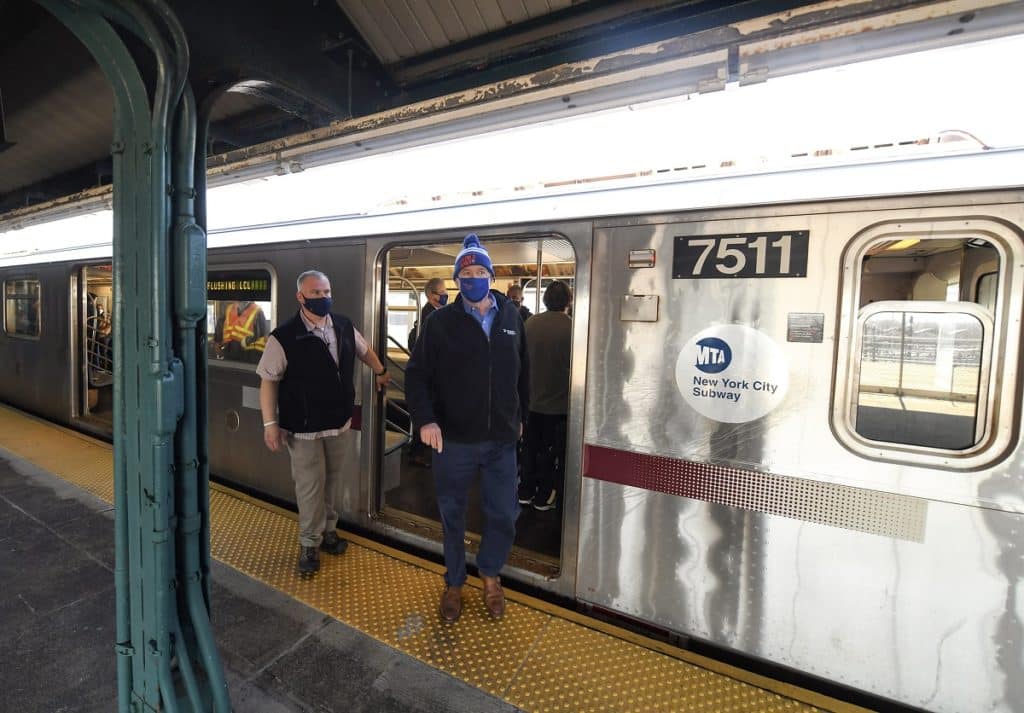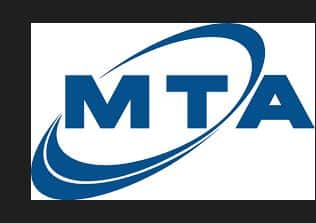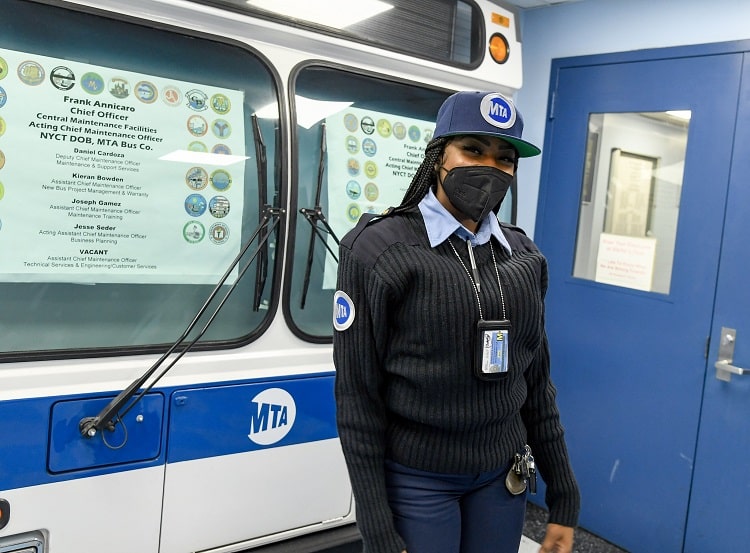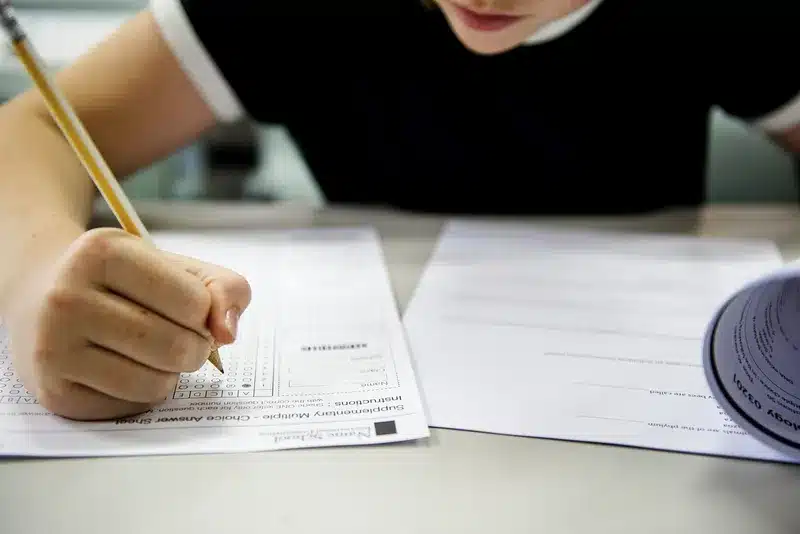Guide to Passing Metropolitan Transportation Authority (MTA) Employment Test
Do you want to become the next bus or train operator for the MTA? It’s the biggest transportation network around the United States, so you need to ace their MTA employment process.
This article will tell you everything about the MTA employment exams, their structure, length, and sub-themes. We will also give you some sample questions you can check out, and we will point you towards to best resources to help you prepare and excel on these employment exams.

Table of Contents
About MTA
The MTA is an acronym for the Metropolitan Transportation Authority, which is the biggest North American transportation network.
It spreads across 5,000 square miles in New York City, Long Island, southeast New York state, and parts of Connecticut. Around 15.3 million people use the services of the MTA, and the agency itself has the biggest bus and subway commuting rails in all of North America.
Being a very big company, the MTA is divided into five different agencies:
- Metro-North Railroad
- MTA Bus
- MTA Bridges and Tunnels
- MTA New York City Transit
- Long Island Rail Road
What Are the MTA Employment Exams?
For the work to be done correctly, timely, and efficiently, the MTA has some of the most competitive hiring processes. Especially for positions like MTA bus driver, the MTA train operator, or the MaBSTOA bus operator.
Applicants for any of these positions need to pass two different tests. Read on, the next section will get into more details about the MTA hiring process.
The MTA Hiring Process
The MTA is a big company with millions of job positions. Naturally, different expertise and skill sets are needed for different positions.
If you’re looking to become one of the following, you might be required to take and pass one or two different exams:
- Bus or train operator
- Bus or train driver
- Bus or train conductor
For now, let’s explain the hiring process itself:
Online Application
Filing an online application is the first step toward becoming a bus or train operator at MTA. You need to log in with an e-mail address and fill out the application with information about your educational background, personal qualities, past job experience, and contact details.
In this step of the process, you also need to provide MTA with your resume.
From there, you can search and scroll through all their open jobs. Once you find something you like, similarly to online shopping, you can add it to your “job basket.” In the end, apply to all the jobs in your job basket with only one click.
But, make sure that you comply with all the requirements for the job. If not, you won’t even be considered for the job and your application will automatically be rejected.
MTA Employment Exams
If you comply with basic requirements and your resume stands out, you should receive a confirmation mail that will tell you everything you need to know about the next step of the hiring process.
If you do receive a confirmation e-mail or letter, you will need to bring it with you on the testing day since it serves the purpose of an “entry ticket” for the test. This confirmation mail will also tell you the type of test you’ll be taking.
Different job positions take different tests, but conductors, operators, and drivers usually are required to take either the MTA BOSS exam or the MTA Multiple-choice exams. You will get in-depth about both of these exams later on in the article.
Don’t be disappointed if you don’t receive a confirmation e-mail days after your initial applications. The MTA might put you through the next step even years after your initial application date. It all depends on the number of applicants and the success rate by which they finish each step of the process.
Medical Exam and Drug Test
If you did a great job at the MTA employment tests, you are going on the next step of the process.
Working for the MTA as a conductor, driver, or operator, is a stressful job that requires a lot of attention, fast reaction, working calmly under pressure, following schedules and timings, operating hard machinery, etc.
For the candidate to be able to do this job, they CAN NOT, under any circumstances, have a medical condition that impairs their ability to operate buses or trains. Nor are they allowed to be addicted to any kind of medical or non-medical drugs.
Naturally, the medical exam and the drug test are a sign that you are certainly close to landing the job. Medical exams and drug tests are only given to people that score highly on the exams and look like suitable candidates for the job position.
Interview
The last step of the process is the interview. Most of the time, the interview is held in person, but there is a possibility of having an online webcam-based interview. Either way, you need to show up on time and be professionally dressed.
The interviewing process itself will once again go over the results of your testing, but will also examine some of your soft skills, including:
- Communication skills
- Logical thinking
- Decision making
- Conflict resolution
- Positive attitude
- Team spirit
- Work ethic
- And other things
Training Course
If you pass all of the previously stated parts of the process, you will also be required to take a six-week training course. There, you will be presented with real-life situations and will be able to see how a normal work day for a train or bus operator goes.
If you fail to finish the course or don’t live up to MTA standards, your employment process will be terminated.
Who Is Eligible to be an MTA Operator?
To be an MTA train or bus operator, you need to have at least a high school diploma (or an equivalent); possess a valid New York State driver’s license, and have a year of work experience in the field.
Most job positions available on the MTA positions website will tell you all the qualifications you need to have to be eligible for the job. It’s best to carefully examine them before applying for the job.
MTA Bus and Train Operators Exams
The bus and train operators, conductors, and drivers need to pass a challenging testing process of either both the MTA BOSS exam and the MTA multi-choice exam; or just one of them. It mostly depends on the job position you applied for.
Either way, it’s high competition and only one-third of all applicants pass the exams and go to the next stage of the hiring process. The next sections of our article will get into more details about both of these tests. Read on.
MTA BOSS Exam
One of the two possible tests you could be taking as part of the MTA employment process is the MTA BOSS exams.
What Is the MTA BOSS Exam?
The MTA BOSS exam, also known as the MTA Bus Operator Selection Survey exam, is a set of personality questions. This psychometric test will measure different aspects of your personality such as: working under pressure, work ethic, life outlook, decision making, etc.
The test might be complex simply because sometimes, it’s hard to decide which answer is more appreciated. Other times, the same questions will be asked in different formats to ensure that you’re not faking your answers.
How Many Questions Are There on the MTA BOSS Exam?
The MTA BOSS exam has 75 questions and you have a time limit of 75 minutes for answering the questions, which is more than enough time.
It contains three different sub-tests and each of them will contain around seven to eight questions. The next section will give you more details about the MTA BOSS test and its structure. We will also provide you with some question samples.
Structure of the MTA BOSS Exam
The MTA BOSS exam has three sub-tests with different themes inside.
The sub-tests will measure:
- Being there (your reliability and adherence to schedules)
- Being Safe (responsible decision making; safe driving; attention to details)
- Being Courteous (politeness, professionalism when interacting with customers, coworkers, and supervisors)
The test questions on the MTA BOSS exam will be in the form of statements that you need to rank with agreeability.
Please note that some questions will be essentially asking the same thing but in a different format. These “bait questions” want to measure how honestly you answer the questions. So, make sure that your answers are consistent.
Since the MTA BOSS exam is time-restricted, you can’t take too much time to answer. Practicing the test and its questions, and knowing what MTA expects from their employees, will better your chances at acing the test.
Sample Questions for the MTA BOSS Exam
What Is a Good Score on the MTA BOSS Exam?
There isn’t a concrete score you can get on the MTA BOSS exam. The score is on a Pass or Fail basis. Since it’s a psychometric test, i.e., it measures your personality traits, you either have them aligned with what MTA values, or you don’t.
Test officials will go over the tests and select the candidates that have the best personality traits that are needed for the job. There is a rumor that one-third or sometimes even half of the applicants are disqualified at this stage of the process.
Tips to Pass the MTA BOSS Exam
- Read the MTA requirements in the job post
- Use the help of Job Test Prep to practice the test questions
- Get used to the testing material and the format of the questions
- Use JobTestPrep study guides
- While answering the questions, answer with your professional work attitude
- When answering questions, consider what would MTA value most
- Don’t fake the test answers since there are “bait questions”
- Don’t rush through the questions, but also don’t overthink. There is a time limit
MTA Multiple-Choice Exam
The MTA multiple-choice exam for operators and conductors is dedicated to measuring your cognitive skills, ability to think analytically and critically, and the way you react and behave under stress.
The test will also inspect your ability to understand, learn and implement new ideas, solve problems or organize information and draw conclusions.
But, this test is time-restricted, which means that you can’t spend a lot of time working out what the answer could be. The MTA Multiple-chouse test contains numerous sub-tests dedicated to different aspects of your cognitive structure. The next section will get into more details about it while also giving you sample questions.
MTA Multiple-Choice Exam Structure with Explanations
The MTA multiple-choice exam contains 10 sub-tests, all dedicated to a different part of your cognitive abilities.
These are the topics to expect:
Written Comprehension
This sub-test will measure your ability to understand text in written form and draw conclusions based on the info provided.
This ability is important to read all kinds of instructions, tables, graphs, or anything else you might encounter in your work as a conductor or driver.
Written Expression
The written expression sub-test will measure your English language, grammar, and punctuation knowledge, i.e., expressing in writing.
For a bus or train operator, this is an important part of writing reports or communicating with your base.
Information Ordering
This aspect will ask you to arrange actions or narratives by logic.
As a bus or train MTA employee, you need to understand how things arise and develop, what is a probable outcome, what is important to notice, and what isn’t, especially in terms of traffic and perception of other vehicles.
Spatial Orientation
Spatial orientation, also called orientation in space, is your ability to determine the location of objects, either in relation to one another or in relation to you.
With the help of spatial orientation, you will be able to find your way around big cities and lands as part of the MTA team.
Visualization
Visualization is a sub-category of spatial orientation and is connected to the ability to visualize objects that are in 2D in their 3D form – they might be transformed, rotated, moved, or disassembled into parts.
Your ability to understand forms, their dimensions, and how they look from another angle can also help you in everyday work obligations. This includes things such as: how far other vehicles are, what curvature you need to do with the bus or train to avoid an obstacle and the like.
Inductive Reasoning
Inductive reasoning is the ability to come up with or predict general conclusions based on provided information or events. This subtest will test your ability to do so.
With the help of inductive reasoning, you might notice and predict which days and parts of the day have the most commuting density and around what parts of town.
Deductive Reasoning
Deductive reasoning is opposed to inductive one – the ability to draw some specific conclusions from provided information based on general rules or probability.
In your work as a bus or train operator, this might translate as your ability to predict that the next few streets will not have working traffic lights, since the ones you’ve passed so far were signaling yellow all the time.
Problem Sensitivity
This sub-theme of the exam will test your ability to identify problems, prioritize them, and organize their specific components.
In work-related situations, this can be your ability to simultaneously notice someone crossing the street, a ball rolling off the sidewalk, and a vehicle trying to pass you, and deciding how to act in a matter of seconds.
Mechanical Aptitude
Mechanical aptitude is the application of general physical principles in everyday situations. These might include Newton’s laws, gravity, or acceleration.
Working as a bus or train operator, these are the laws of physics you’re going to apply to your machinery – the curvature you need to do, the pressure you need to apply to your pedals, etc.
Short-term Memory
Short-term memory is our so-called “working memory,” which allows us to remember and recall data or info soon after perceiving it (seeing it, hearing it, smelling it, etc.)
As part of your job as an MTA train or bus operator, it might translate as knowing how many seconds you have left until the yellow light.
If you want to take a look at sample questions of these sub-tests, head over to Job Test Prep’s preparation guide.
What Is a Good Score on the MTA Multiple-Choice Exam?
To pass the MTA multiple-choice exam, you need to have a score of 70% or more. 70% is the least score you need to have to be eligible, but the higher the score you have, the more chances of actually landing the position.
Tips to Pass the MTA Multiple-Choice Exam
- Read the MTA requirements in the job post
- Get help from Job Test Prep to practice the test questions
- Practice tests that are time-restricted to get used to them
- Learn and practice with a lot of dedication and efforts
- Be aware of your weak sides and concentrate on bettering them
What Can Job Test Prep Help You With?
Job Test Prep is the best practice test library with millions of testing materials for all kinds of state, national and corporational exams. With their help, you will receive a money-back guarantee if you’re not happy with your membership, 24/7 customer support in case there is anything you need help with, and a secured payment system.
MTA BOSS Exam Preparation Practice
- Personality Practice tests
- Personality tests study guides
- Dependability and Safety Instrument Test
MTA Multiple-Choice Exam Preparation Practice
- Reading comprehension and Verbal tests
- Information ordering tests
- Spatial orientation and Visualization tests
- Inductive and Deductive reasoning tests
- Mechanical aptitude tests
- Short-term memorization tests
- Problem-sensitivity tests
Conclusion
The MTA employment process is extensive and allows only the best to become future bus or train operators for the MTA. With two types of tests and numerous sub-themes on the testing, you need to be prepared if you want to land your next job with MTA.
To ease your anxiety and to better your chances of getting in those top 30% of candidates, you should use the Job Test Prep MTA employment exam preparations.
Written by Victoria Todorovska
Victoria (or Viki) is a Freelance Writer, Psychologist, and Gestalt Therapy Consultant. With years of experience in higher education as well as counselling others, she is well-placed to offer expert advice on guiding others up the career ladder.
Sarah is an accomplished educator, researcher and author in the field of testing and assessment. She has worked with various educational institutions and organisations to develop innovative evaluation methods and enhance student learning. Sarah has published numerous articles and books on assessment and learning. Her passion for promoting equity and fairness in the education system fuels her commitment to sharing insights and best practices with educators and policymakers around the world.











